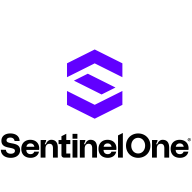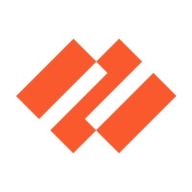


Prisma Cloud and Uptycs are cloud security platforms with Uptycs emerging as a superior option due to its robust features.
Features: Prisma Cloud secures cloud environments with comprehensive threat prevention, compliance support, and deep visibility, integrating natively with existing tools. Uptycs offers expansive analytics, fine-grained policy controls, and powerful response capabilities suitable for modern infrastructures.
Ease of Deployment and Customer Service: Prisma Cloud provides a straightforward deployment process with extensive documentation and responsive support. Uptycs offers a modular deployment model allowing phased integrations with a proactive service approach.
Pricing and ROI: Prisma Cloud is praised for predictable pricing and compelling ROI through extensive security coverage. Uptycs, while having higher setup costs, delivers a strong ROI through enhanced threat detection and automation capabilities.


SentinelOne Singularity Cloud Security protects cloud workloads, offering advanced threat detection and automated response. It integrates seamlessly with cloud environments and secures containerized applications and virtual machines against vulnerabilities.
SentinelOne Singularity Cloud Security is renowned for its efficiency in mitigating threats in real-time. The platform integrates effortlessly with existing cloud environments, ensuring robust cloud security management with minimal manual intervention. Securing containerized applications and virtual machines, it excels in threat intelligence and endpoint protection. However, improvements are needed in performance during high workload periods, and more integrations with third-party tools and better documentation would be beneficial. Users often find the installation process complex, support response times slow, and the dashboard's navigation unintuitive.
What are the key features of SentinelOne Singularity Cloud Security?In specific industries, SentinelOne Singularity Cloud Security is implemented to safeguard critical data and infrastructure. Organizations in finance, healthcare, and technology depend on its real-time threat detection and automated response to protect sensitive information. Its ability to secure containerized applications and virtual machines is particularly valuable in dynamic environments where rapid scaling is necessary.
Prisma Cloud by Palo Alto Networks delivers comprehensive security for cloud environments, focusing on workload protection, identity creation, and seamless AWS integration. Its cloud visibility and control, combined with thorough vulnerability scanning, help maintain robust security across multi-cloud platforms.
Prisma Cloud provides essential capabilities for cloud security posture management, container security, and compliance monitoring. Enterprises utilize it to secure cloud configurations, detect vulnerabilities, and ensure regulatory compliance, spanning AWS, Azure, and Google Cloud. Its runtime management, identity-based micro-segmentation, and threat detection enhance cybersecurity. Despite needing improvements in documentation, integration complexities, UI, and the need for role-based access control refinement, it remains pivotal for securing assets across cloud infrastructures, particularly with its capabilities for vulnerability scanning and CI/CD pipeline integration.
What are the key features?
What benefits or ROI should users expect?
In industries like finance, healthcare, and retail, Prisma Cloud is implemented to strengthen cybersecurity measures, facilitate regulatory compliance, and enhance governance. Organizations leverage its features to secure sensitive data, monitor configurations, and integrate security processes within CI/CD workflows, ensuring robust protection across complex cloud infrastructures.
Uptycs provides robust security monitoring and threat detection, ensuring comprehensive endpoint security, compliance monitoring, and cloud infrastructure protection. It offers real-time alerts and streamlined deployment across IT environments, enhancing security operations and incident response.
Uptycs is an effective tool for threat detection and security monitoring, valued for its real-time monitoring capabilities and seamless deployment. It integrates well with cloud environments, offers detailed reporting, and has a customizable alert system. Users appreciate its scalability, ease of use, and quick response times. However, enhancements in data visualization, better integration with other security tools, and improvements in documentation and customer support could further elevate its value.
What are the key features of Uptycs?
What benefits and ROI should you consider?
Uptycs is particularly beneficial in industries needing robust security measures, such as finance, healthcare, and e-commerce. It provides these industries with enhanced visibility into their assets and streamlined compliance and security operations, ensuring protection against evolving threats.
We monitor all Cloud-Native Application Protection Platforms (CNAPP) reviews to prevent fraudulent reviews and keep review quality high. We do not post reviews by company employees or direct competitors. We validate each review for authenticity via cross-reference with LinkedIn, and personal follow-up with the reviewer when necessary.